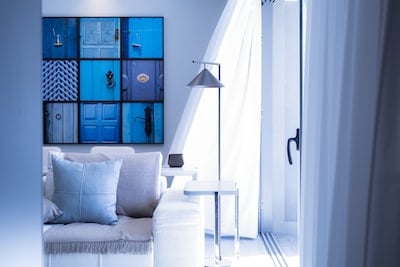Secondary double glazing has gained immense popularity in recent years as homeowners strive to enhance insulation and reduce noise pollution in their dwellings. Factors affecting secondary glazing costs range from the type of window chosen to the complexity of the installation process itself.
Whether it be for historical preservation or energy efficiency purposes, the investment in secondary double glazing can be a wise one – however, it is crucial to understand the various elements that contribute to the overall price tag. From the material used for the frames to the specific requirements of the property, there are numerous variables that can influence the cost of this home improvement endeavor.
Let’s delve deeper into these factors and unravel the mysteries surrounding secondary glazing costs.
Table of Contents
Window Size and Dimensions
Factors such as the window’s square footage, the number of panes, and the complexity of the design all contribute to the final price. Larger windows require more materials and a longer installation process, resulting in higher costs.
If your windows have unique shapes or dimensions, it may be difficult to find pre-made double glazing units that fit perfectly, leading to more expensive custom-made solutions. Before starting your double glazing project, take the time to carefully measure and assess the size and dimensions of your windows.
You may be surprised by how much they can impact the overall price.
Type of Glass and Energy Efficiency Rating
When it comes to the cost of secondary double glazing, the type of glass and its energy efficiency rating play a vital role. Factors affecting secondary glazing costs can vary greatly, but the choice of glass is often overlooked.
According to a study from the Energy Saving Trust, using low-emissivity (low-E) glass can significantly reduce heat loss and energy consumption. However, this type of glass comes at a higher price.
On the other hand, double-glazed units with standard glass may be more affordable initially, but they don’t provide the same level of energy efficiency. Understanding the trade-off between cost and energy-saving potential is essential for homeowners.
While some may prioritize cost savings, others may be willing to invest in more efficient solutions for long-term benefits. Considering all these factors, it is clear that the type of glass and energy efficiency rating are crucial in determining the overall cost of secondary double glazing.
(Reliable source: Energy Saving Trust – https://energysavingtrust.org.uk/)
Frame Materials and Construction
But why does the cost of secondary double glazing vary so much? One surprising factor is the materials and construction of the frames. Different materials, like traditional timber or modern uPVC, can greatly impact the overall cost.
Timber frames, for instance, are more expensive but offer durability and an appealing aesthetic. On the other hand, uPVC frames are more affordable and low maintenance.
The construction method is another factor to consider. Some companies use pre-fabricated frames, while others provide bespoke options at a higher price.
When choosing secondary double glazing, it’s important to consider these factors to find an option that suits both your budget and style preferences.
Installation Complexity and Accessibility
One overlooked aspect is the installation complexity and accessibility of your windows. While it may seem simple, every home is unique and difficulty can vary.
Factors like the type and condition of your existing windows, the size and shape of the openings, and the ease of access to the installation area can all impact the final cost. For instance, if you have older, irregularly shaped windows or limited access to certain areas of your home, the installation process may require more time and expertise, resulting in a higher cost.
Therefore, it’s important to have a professional assess your home to determine the installation complexity and accessibility before getting a quote for secondary double glazing. By considering these factors, you can make an informed decision that fits your budget and improves the energy efficiency of your home.
Additional Features and Customization Options
Factors like size and material are always considered, but additional features and customization options can also impact the price. Surprising factors such as the type of glass used, special coatings, and hardware choices can all play a role in the final cost.
For instance, if you choose energy-efficient glass or a tint to reduce glare, the price will be higher. Similarly, fancy handles or locks will also add to the overall cost.
So, when you’re thinking about secondary double glazing, remember these lesser-known factors that can make a significant difference in the final price.
Enhance Your Home with Polar Bear Windows’ Secondary Double Glazing
Polar Bear Windows, a home improvement company based in Bristol and Bath, boasts an array of products and services to revamp your humble abode. Specializing in double glazing and uPVC windows, they promise to bring warmth and style to any dwelling.
Not stopping there, they also provide an extensive range of doors and conservatories, ensuring the perfect fit for every customer’s unique taste and requirements. With a strong focus on uPVC windows, composite doors, and conservatories, their expertise shines through each installation they undertake.
But what about the dreaded cost of secondary double glazing, you ask? Well, fear not! Polar Bear Windows prides itself on offering competitive pricing without compromising on quality. With guarantees and a long-standing track record in the industry, they assure satisfaction for anyone seeking to enhance their homes without breaking the bank.
It’s time to welcome the charm of secondary double glazing into your life, courtesy of Polar Bear Windows!
Frequently Asked Questions
Secondary double glazing involves adding an extra layer of window glazing to an existing window to improve insulation and soundproofing.
The larger the window size, the more materials needed for secondary double glazing, which can increase the overall cost.
Yes, the type of window frame can affect the cost. Certain materials, like aluminum, may require additional reinforcement, thereby increasing the overall cost.
The choice of glass type can impact the cost. For example, using low-emissivity (Low-E) glass to enhance energy efficiency may increase the overall price.
Yes, if the installation process is complex due to factors such as inaccessible windows or uneven surfaces, it can add to the overall cost of secondary double glazing.
In Closing
In conclusion, the cost of secondary double glazing can be a truly perplexing matter. The enticing promises of energy efficiency, enhanced insulation, and noise reduction may make it seem like a worthwhile investment.
However, the burst of excitement may dim slightly when confronted with the price tag. The intricate web of factors influencing the cost, such as the size of the windows, the type of glazing, and the complexity of installation, adds further complexity to the equation.
While some may argue that the benefits outweigh the expense, others might find themselves questioning whether it’s truly worth the premium. Ultimately, the choice of secondary double glazing must be made with careful consideration, weighing the advantages against the potential strain on one’s wallet.














